PRR MP-54 -


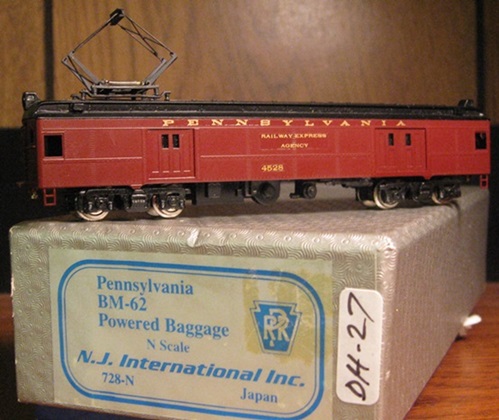
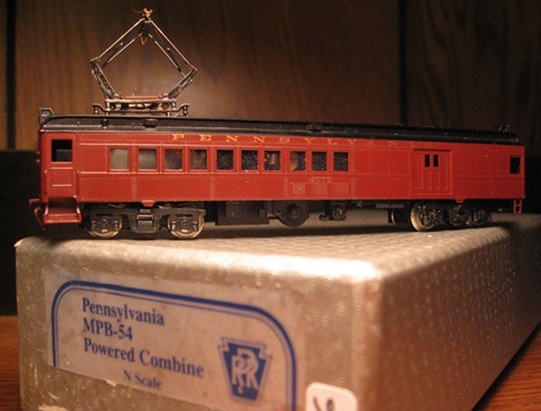
PRR MBM-62 Baggage/Mail

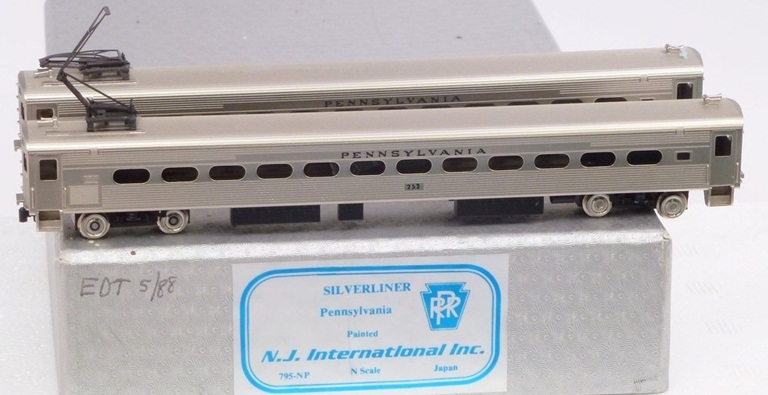


PRR MP-54 -




PRR MBM-62 Baggage/Mail




Introduced: 1986 (MP-54), 1988 (BM-62, MBM-62, MPB-54, Silverliner) and 1989 (Washboard)
These models all came out around the same time and sport the same basic mechanism design. The BM-62, MBM-62, and MPB-54 powered cars were sold individually (retail: $189). The Silverliners were sold in two-car sets (retail: $340). There were actually two Washboard releases - the original three-car set and then a two-car add-on set (Combine and Club Car). Powered and dummy MP-54 cars were sold individually as well as in two and three-car sets. In the case of the sets, one unit was powered and the rest were dummies. -
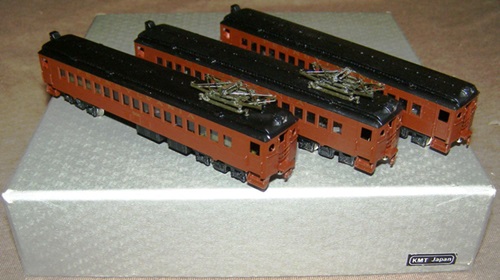
Powered MP-54 singles were labeled "A" on the box whereas the non-powered units were labeled "B". The "no pantograph" dummy coaches were labeled "C" -

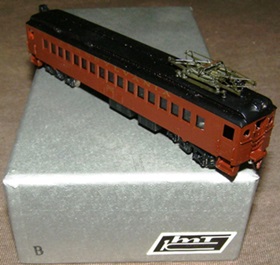
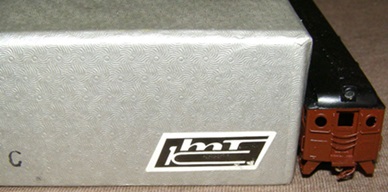
The Silverliners were available in either PRR livery (60 sets) or Reading Commuter Lines livery (30 sets). The Washboard sets were available in either Hunter Green or Socony Red paint. I'm told that the paint on all of these is well done, although my impression is that number decals were provided ala carte on at least some of them (as a separate "do it yourself" project). The Silverliners are plated (as opposed to painted) and have printed lettering (as opposed to decals). These models are all extremely rare (they hardly ever show up on eBay, that's for sure). And given their scarcity, they seem to have held their value very well (generally selling for at least their original retail value, and sometimes a whole lot more).
Typical of Kumata, the mechanism design is fairly minimalistic -
Washboard -


PRR MP-54 (et al) -

Silverliner -

The chassis is simply a flat piece of brass (with most of the model's heft provided by its shell). The motor is an open-sided / straight-wound five-poler. The motor spins metal driveshafts, each of which have a couple of plastic u-joints (short ball-and-pin style connectors that fit inside notched plastic cups). All wheels are geared and all gearing is metal. The trucks are held in place inside the worm gear boxes with threaded knock-out pins. There is no lighting or interior detail. There aren't any couplers either, although Micro-Trains friendly body-mounting screws/holes are provided. Most of these have plastic window inserts (although, oddly enough, the Washboards don't). The pantographs are adjustable (and except for the MP-54's, are also sprung). Wheels are low-profile, so no problems on Code-55 rails.
Pickup varies depending on the model. The silverliner trucks only pick up current from one rail, whereas the trucks on all the rest of them collect current from both rails (none of them have traction tires). On the non-silverliners, right-rail current is collected by wheel-top wipers and transferred to the motor via a pair of wires. Left-rail current flows from the axles into the trucks and finally the chassis (ultimately reaching the motor by way of a single wire). The silverliners employ a similar wiring scheme, but again, with just one rail's worth of current per truck.
Overall performance also varies depending on the particular model. Given the all-wheel pickup scheme on the non-silverliners, throttle response is very smooth. Factor in the five-pole motors and slow speed creep is similarly outstanding (no stalls, no stuttering). The top-end speed seems a little high, but then again I've certainly seen worse. Despite the 50% reduction in pickup, the Silverliners reportedly perform just as well as the others (although one would assume that they would have some problems navigating insulated frog turnouts).
The main problem with these models is that they tend to be a bit noisy (particularly the Washboards and Silverliners). The metal gears and hollow brass shells certainly don't help the situation, but the real culprits here are the bearings and the fact that they're somewhat loose fitting and wobbly where they mount to the gear boxes. In the case of the MP-54's, what you wind up with is a bit of a vibrating growl as they roll along (no, not horrible, but definitely not whisper quiet either). On the other hand, the lengthy metal driveshafts employed in the Washboards and Silverliners really exacerbate the problem, and the end result is some very coffee grinderesque racket (particularly the Washboards). I'm told that one can solve the noise problems by adding some glue to the bearing holes in the gear boxes (thus seating the bearings a bit more firmly). A more ambitious solution would be to simply replace the stock bearings with some that fit the gear boxes better.
Oddly enough, the quietest runners of the bunch are the BM-62, MBM-62, and MPB-54 powered cars. I'm not sure what the story is there, but perhaps Kumata tightened up the tolerances on the gear boxes (vis'a'vis the bearings). In any case, they do run just a little quieter than the MP-54's (or at least the ones I tested did).
So, at the end of the day what we have here are some models that are solid runners, but most of which also have some noise issues. In the case of the MP-54's (et al), I think it's liveable. As for the Silverliners and Washboards? Not so much...
Grades: B (MP-54, BM-62, MBM-62, and MPB-54) and C (Washboard and Silverliner)